The 4th
LaureateTheatre/ Film
Akira Kurosawa
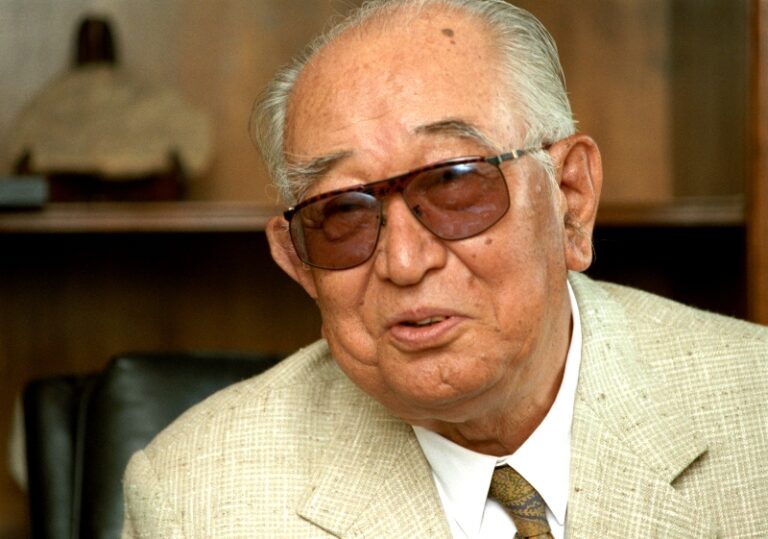
If there exists a single body of work in the history of cinema which is at once literary,theatrical,painterly,philosophical and musical,it is that of Akira Kurosawa. The international triumph of Rashomon in 1951 opened Western eyes not only to Kurosawa’s own mastery but to the very existence of the Japanese cinema,one of the world’s greatest. Kurosawa’s pre-eminence outside his native land resulted principally from the harmonious co-existence in his aesthetics of a hyper-Japanese ‘exoticism’,derived from Samurai history and folklore,and a lifelong fascination with Western cultural archetypes (he acknowledged the Westerns of John Ford,for instance,as an influence on his work). Such a combination had the effect of rendering his films more widely accessible than those of his compatriots.
Biography
‘The cinema,’ Akira Kurosawa once remarked,‘resembles so many other arts. If it has very literary characteristics,it also has theatrical qualities,a philosophical side,attributes of painting and sculpture,and musical elements. Yet it is,in the final analysis,cinema.’
If there exists a single body of work in the history of the medium to which all these properties apply,it is that of Kurosawa himself. In a long and prolific career he made several films of literary inspiration (adaptations of Dostoevsky,Gorki and Shakespeare); others which consciously foregrounded an intrinsic theatricality,in particular by their deployment of consciously stylised décors (Dodes’ Ka-Den,1970); others which could be inscribed within a humanist tradition that Westerners have always tended to regard as quintessentially Occidental rather than Oriental (Ikiru,1952,his unforgettable portrait of a dying businessman’s last,humanitarian gesture); others,finally,whose sumptuous imagery amply justified the too easily bandied-about epithet ‘painterly’.
Undeniable,too,were the ‘sculptural’ and ‘musical’ facets of his films,whether in the hallucinatory physicality with which all his protagonists were invested (notably the aged,ailing feudal overlord of Ran,spikily caparisoned like a besequinned insect) or in the interplay of multiple narrative threads within a single film like fugually interrelated leitmotiven – most famously the four divergent versions of the same ‘truth’ in Rashomon. It was Rashomon precisely which,when it was premièred at the 1951 Venice Film Festival,opened dazzled Western eyes not only to Kurosawa’s own supreme mastery (it was awarded the festival’s Golden Lion) but to the very existence of the Japanese cinema,one of the world’s greatest.
Kurosawa was born in Tokyo in 1910,the youngest of seven children of a veteran army officer. Having failed to make a satisfactory living as a commercial artist – like Eisenstein,the director to whose sensibility his own was arguably most closely attuned,he was a witty,incisive caricaturist – he was hired in 1936 as first assistant to Kajiro Yamamoto,whom he would come to regard as his teacher and mentor. It was in 1943 that his career as a director was launched with Judo Saga,a period melodrama in which his notorious perfectionism was already in evidence. For a sequence in which the hero suicidally leaps into a pond,the young,untested filmmaker insisted that the sound produced by lotus blossoms when they burst open be clearly audible.
Following the international triumph of Rashomon (a work frequently referred to as Pirandellian for the manner in which it explored the shifting ambiguities of perception and memory through a quartet of four mutually incompatible accounts of the same violent incident) Kurosawa became the most celebrated of all Japanese artists. This pre-eminence,at least outside his native land,resulted principally from the harmonious co-existence in his aesthetics of a hyper-Japanese ‘exoticism’ – derived from Samurai history and folklore – and a lifelong fascination with Western cultural archetypes,a combination which had the effect of rendering his films more widely accessible than those of his compatriots.
In such hyperactive Samurai yarns as The Hidden Fortress,Yojimbo and Sanjuro,for example,could be detected the influence,an influence candidly acknowledged by Kurosawa,of the classic Westerns of John Ford. Nor did the cultural traffic travel just one way. The Seven Samurai,one of Kurosawa’s most universally admired masterpieces,was of course refilmed by Hollywood as The Magnificent Seven. But Rashomon,too,was subsequently Westernised (in both the geographical and generic senses of the term) as The Outrage,although the grafting in that case was considerably less convincing. As for the ‘spaghetti’ westerns of Sergio Leone and company,their flamboyant stylistics would have been simply inconceivable without the prior example of Kurosawa’s historical epics.
While Kurosawa’s prestige waxed in the West,however,it started to wane in Japan – to the point where,having been virtually inactive for a decade,he made a much-publicised suicide attempt. For many of the younger Japanese directors,especially during the socially divisive sixties,he had come to seem passéist and aloof,as though no longer deigning to turn his lofty patrician gaze to the quotidian problems besetting their society.
This (temporary) estrangement was a regrettable but natural consequence of his own towering presence. So much did Kurosawa appear the classic Freudian father-figure who had to be slain in order for succeeding generations of artists to map out a space for themselves,it is possible to interpret the magnificent Ran – the film,along with Kagemusha,which once more propelled him into the forefront of the world’s cinema – as obliquely,allegorically,autobiographical in theme. Ran,as it happens,was an adaptation of King Lear skilfully transposed to medieval Japan,but one in which the old King’s ungrateful daughters were transformed,doubtless significantly,into no less ungrateful sons.
Gilbert Adair
Chronology
Rashomon,awarded the Golden Lion Prize at Venice Film Festival
Rashomon chosen as 'The Lion among Lions' (the best film among all Grand Prix winners) at Venice Film Festival to commemorate its 50th anniversary
Rashomon chosen as 'The Lion among Lions' (the best film among all Grand Prix winners) at Venice Film Festival to commemorate its 50th anniversary
-
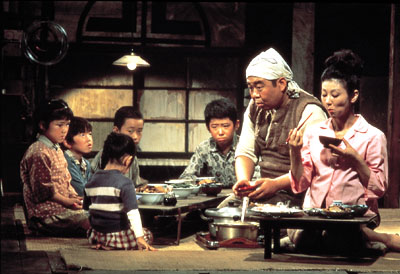
Dodes Ka-Den, 1970
-
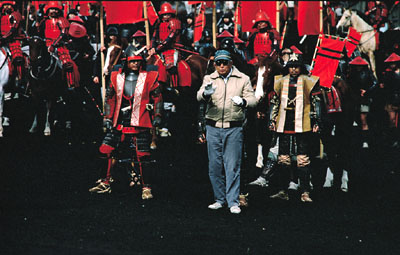
Kurosawa directing Ran, 1985
-
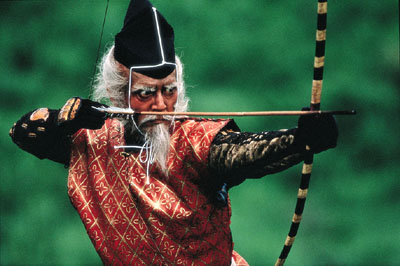
Ran, 1985, Tatsuya Nakadai
-
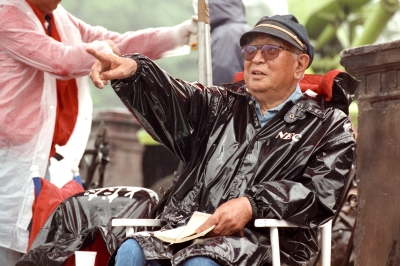
Kurosawa directing Madadayo, 1993
-
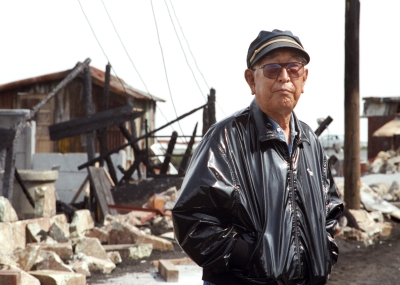
Kurosawa directing Madadayo, 1993

